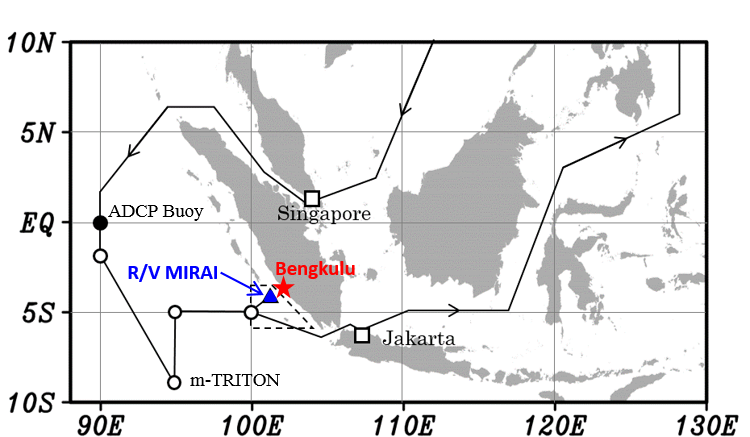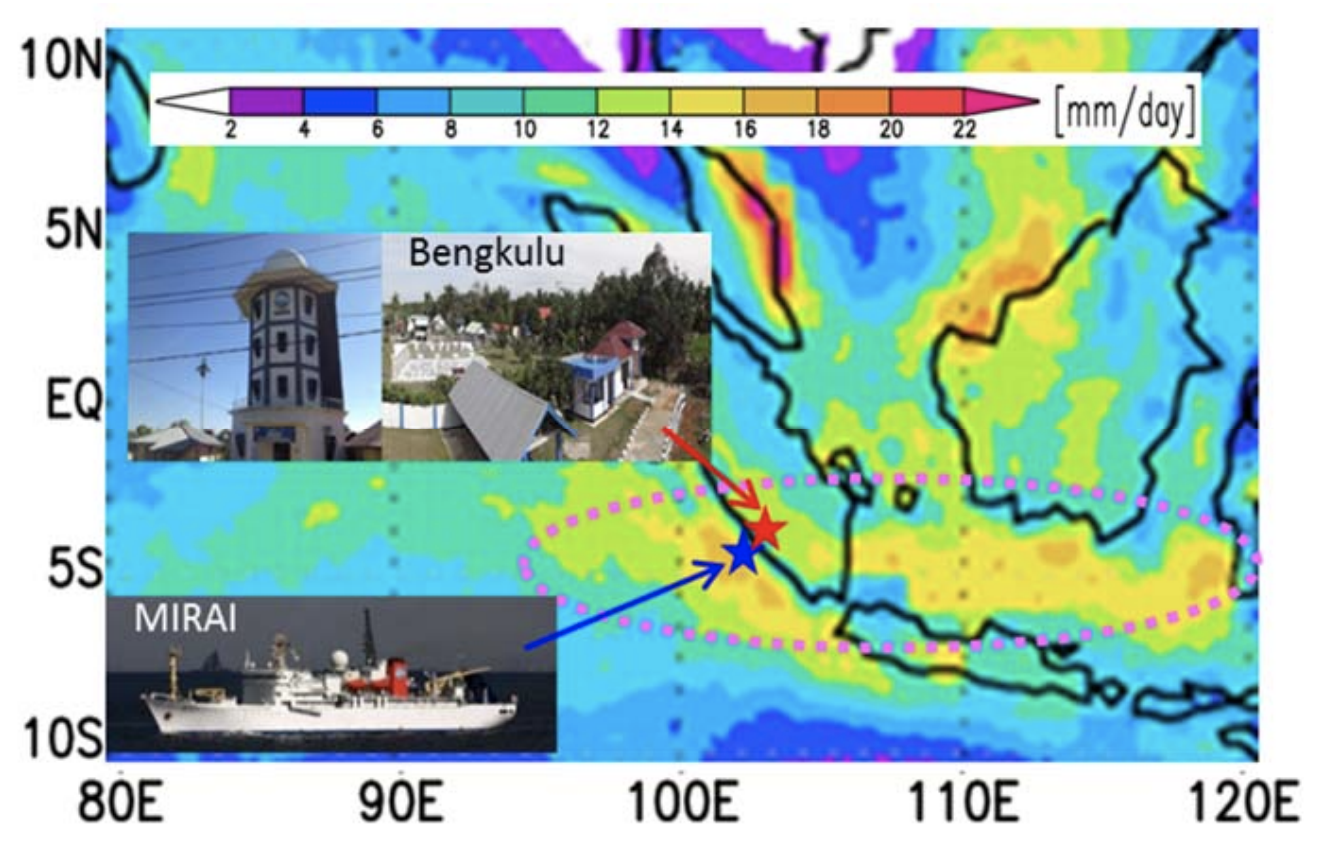YMC-Sumatra 2017
Contact point:
Kunio Yoneyama (JAMSTEC)
Overview:
This is a joint effort by Indonesia and Japan to study the precipitation mechanism along the western coast of Sumatra Island by forming an observation network with a ship, moored buoys, glider, and land-based site at Bengkulu, as well as numerical modeling study. It is known that diurnal cycle rain dominates over the coastal region with afternoon peak over the land and its offshore propagation in the early morning, which results in another peak of rain over the ocean in the morning. However, this diurnal cycle is modulated by large-scale atmospheric disturbances such as the MJO, while the MJO is also affected by the local diurnal cycle. Thus, this project focuses on the interaction between diurnal cycle rain and the MJO.
Objective:
Study on interaction between diurnal cycle rain and the MJO
Period:
November 16, 2017 - January 15, 2018
Participants:
Indonesia - BMKG, BPPT, LAPAN, ITB, University of Bengkulu, etc.
Japan - JAMSTEC, University of Tokyo, University of Toyama, Kyoto University,
Yamaguchi University, NME Ltd., MWJ Ltd., etc.
US - University of Hawaii/IPRC
Location:

R/V Mirai is scheduled to conduct stationary observation off Bengkulu from December 3, 2017 to January 1, 2018. Prior to that, moored buoys as part of RAMA array will be recovered/deployed.

Observation network. Shading indicates climatology of monthly mean precipitation observed by TRMM for December.
Observations:
Land-site:
C-band Doppler radar, radiosonde (8/day for 2 months), surface meteorology, GNSS water vapor, Water vapor-Ozone-Cloud particle sonde, videosonde, lighting detector, rain/water vapor isotope
Onboard:
C-Pol Doppler radar, radiosonde (8/day for 1 month), surface meteorology, GNSS water vapor, lidar, ceilometer, micro-rain radar, MAX-DOAS (aerosol), CTD with water sampling (chemical analyses), ADCP, LADCP, Ocean microstructure profiler
Others:
Wave-glider, moored buoys (as part of RAMA array)
Numerical study:
Two types of forecast run (global 7-/14-km mesh for 14-/30-day forecast) using NICAM will be performed. In addition, several numerical studies using WRF are planned by several research groups.
For more information visit: jamstec.go.jp/ymc/campaigns/IOP_YMC-Sumatra_2017